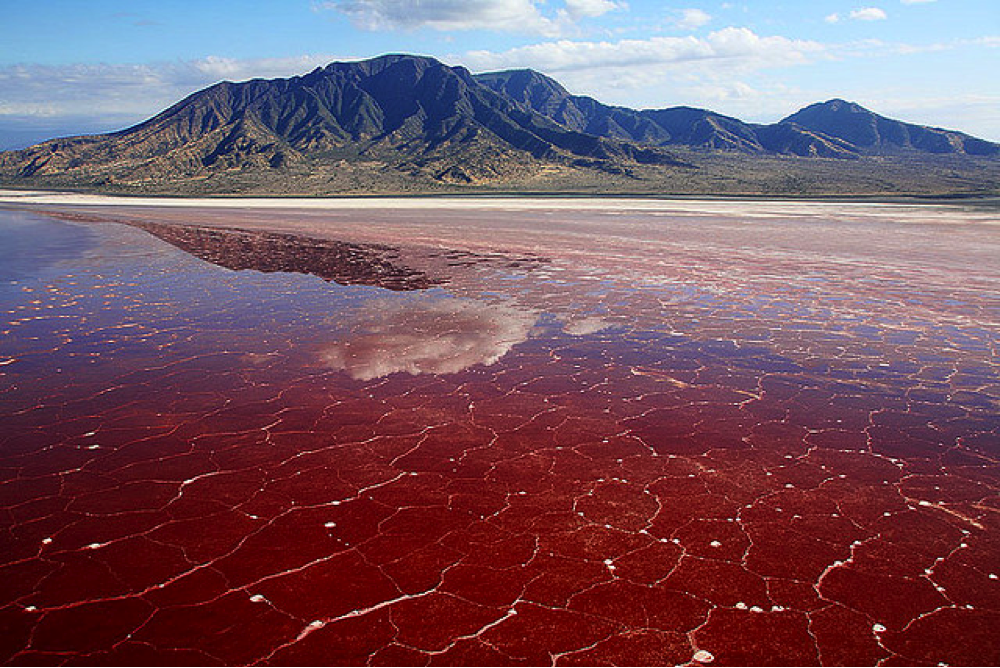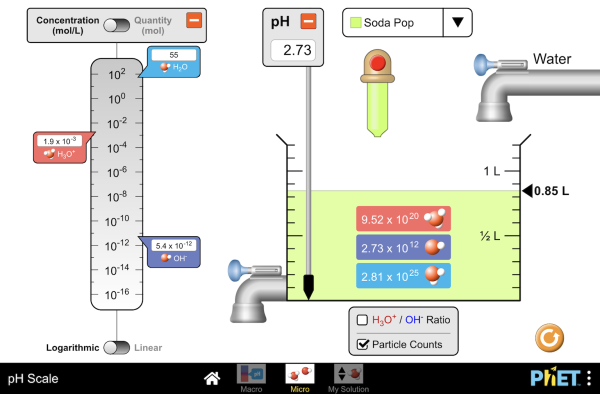New 3D Science Café website
All of your favorite links, resources, templates, lessons, and workshops can be found via our new site. Please join us!
Monday, November 27, 2017
Exploring Pollination Through Flower Dissection
This lesson explores the structures flowers have that aid in reproduction. Students then design their own flower based on evidence gathered from studying flower blossoms.
Wednesday, November 22, 2017
Breakout Game: Evidence of Evolution in 3-D
I created a Breakout Box Game for Middle School Life Science students that can easily be adapted to high school level students focusing on the EVIDENCE THAT SUPPORTS EVOLUTION. This game is written as a 3-D lesson and took two 40 minute periods to complete. I modified the clues after completion of the lesson to help make the game doable in one class period. This was the first breakout box lesson my students have been exposed to and I believe a second lesson of this type will take much less time now that the students understand how the game clues and lock codes operate.
Tuesday, November 14, 2017
MS - Modeling Natural Selection in Flying Squirrels
MS - Life Science - Lesson PE: Students will construct an explanation supported by evidence for the causes of the structure and function of the flying squirrels adaptations through Natural Selection.
Tuesday, November 7, 2017
Middle school science = practicing the art of collaboration
Middle School Life Science 5E ENGAGE Lesson
What adaptations do organisms have that help them survive in their environment?
Recently in my middle school classroom, our collaboration abilities have felt a little off-track... way too many direct reminders from me about what the expectations were for students working in groups, and too little self-regulation on the part of my students. This is not going to work for student scientists who need to work together, especially when the Science and Engineering Practices require student interaction.
We're beginning a new 5E learning cycle, so I started off the day with a "Looks Like / Sounds Like" discussion for two behavioral targets. Collaborative work isn't silent, which means that we needed to have a very specific understanding of what Volume Control means in the science classroom. The students contributed their ideas and then we made those our targets for group work for the day.
On each of the group's placemats (an activity printed on 11x17 paper) I put a little box for teacher feedback and walked around giving them pink stars with my "magical highlighter" for achieving the targeted behavior as a group. Look at all those stars!
 |
| Link to the original Google Doc file for this ENGAGE (5E) activity |
All class I heard students asking, "How can we earn another star?" and telling their groups, "If we keep working well together maybe she will give us another one!" I've used this type of reward system before, and it never fails, no matter the age of the students. They crave the immediate feedback and look forward to the validation that they are on the right track when given targets to meet. As we continue working on these behavior targets, we'll experience that much more success as scientists.
Thursday, November 2, 2017
Thursday, October 26, 2017
3D Earth and Space Science - Mapping Earthquakes and Volcanoes
Earth and Space Science 5E Lesson: ENGAGE
What do students know about plate boundaries and their interactions?
HS-ESS2.B Plate Tectonics and Large Scale System Interactions
Link to Lesson Slides
What do students know about plate boundaries and their interactions?
HS-ESS2.B Plate Tectonics and Large Scale System Interactions
I really like the work being done by the New Visions for Public Schools curriculum project. Their updates for 2016-17 give us a meaningful look at how to transition from NY's MST standards to the NYSSLS. The project is a work in progress, but what's great about it is that teachers can truly observe the shift in thinking from traditional instruction to 3-dimensional instruction. Judging by the improvements I've seen over the past three school years, this project seems to be a potentially valuable resource for science educators (as it has already proven to be in other subjects).
This lesson comes from the second Earth Science unit: Plate Boundaries and Surface Features. There is a nice 5E structure to the unit, but I found that this first lesson needed some support. Once again, a Crosscutting Concept graphic organizer comes to the rescue. After engaging in this activity, Earth Science students are immediately able to jump into using the ESRT p. 5 map and can begin modeling the landforms found at different plate boundaries.
Link to Lesson Slides
Tuesday, October 10, 2017
Wednesday, October 4, 2017
Friday, September 29, 2017
3D Earth Science - Earth's Motions - Longitude and Time Zones
Lesson adaptation from your current curriculum:
Regents Earth Science
| Using models to figure out longitude, time zones, and the "15 degrees of rotation per hour" rule |
The understanding of Earth's motions and their contribution to annual and diurnal changes in Earth's systems is a concept that seems to be migrating toward middle school standards in the NYSSLS. However, there are some very specific skills that students need to master for their Regents' exam in Earth Science. This lesson was written to aid students in understanding Earth's rotation, longitude, and time zones, and utilizes a 3-dimensional approach.
Click here to view the original Google Slides file.
This is still a work in progress so you might notice parts that are unfinished. I'd love any suggestions that you might have.
| Students in Regents' Earth Science construct models of time zones |
Monday, September 25, 2017
How CO2 Impacts Temperature Change
This is very much a work in progress! If you try it out, let me know how it goes! I'm always looking to make improvements!
Thursday, August 17, 2017
HS Chemistry - Models of the Atom
3D High School Chemistry Lesson
Lesson by Toni LaPoint, Benita Cataldo, Tim Freed - North Country Master Teachers
3D Physics - Fun Flyers
3D High School Physics Lesson
HS-PS3-5. Develop and use a model of two objects interacting through electric or magnetic fields to illustrate the forces between objects and the changes in energy of the objects due to the interaction.
[Clarification Statement: Examples of models could include diagrams, texts, algebraic expressions, and drawings representing what happens when two charges of opposite polarity are near each other.] [Assessment Boundary: Assessment is limited to systems containing two objects.]
[Clarification Statement: Examples of models could include diagrams, texts, algebraic expressions, and drawings representing what happens when two charges of opposite polarity are near each other.] [Assessment Boundary: Assessment is limited to systems containing two objects.]
Lesson by Charlene Rydgren, Malone CSD
Super-Charged Hummingbirds
3D High School Living Environment Lesson
HS-LS1-7. Use a model to illustrate that aerobic cellular respiration is a chemical process whereby the bonds of food molecules and oxygen molecules are broken and the bonds in new compounds are formed resulting in a net transfer of energy. [Clarification Statement: Emphasis is on the conceptual understanding of the inputs and outputs of the process of aerobic cellular respiration.] [Assessment Boundary: Assessment should not include identification of the steps or specific processes involved in aerobic cellular respiration.]Super Charged Hummingbirds is a 3-D Lesson for Living Environment or other high school biology classes focusing on Energy Transfer and Transformation using Hummingbirds as a Model.
Phenomenon:
Hummingbird in slow motion - How does it get the energy to move that fast?
Wednesday, August 16, 2017
Exploring modeling instruction and the properties of matter
3D Middle School Physical Science Lesson
MS PS1-4: Develop a model that predicts and describes changes in particle motion, temperature, and state of a pure substance when thermal energy is added or removed.
Clarification Statement: Emphasis is on qualitative molecular-level models of solids, liquids, and gases to show that adding or removing thermal energy increases or decreases kinetic energy of the particles until a change of state occurs. Examples of models could include drawing and diagrams. Examples of particles could include molecules or inert atoms. Examples of pure substances could include water, carbon dioxide, and helium.
Phenomenon:
What happens when you add an ice cube to a cylinder filled with oil?
 |
| Photo from Steve Spangler Science |
Students can use the Systems & Models graphic organizer to begin developing a model of the phenomenon, and whiteboards later on to build a group consensus model.
| Link to full set of Crosscutting Concepts Graphic Organizers |
3-dimensional lesson plan for this phenomenon:
 |
| Link to lesson file with blank template |
Modeling the phenomenon:
The most important facet of this lesson is the development of student models to diagram and explain the phenomenon. The demonstration sets the stage for student understanding; it's important for the teacher to equip students with the opportunity to ask questions to reveal new layers of understanding of the phenomenon. Through group collaboration, class discussion, and individual reflection, students have an opportunity to continually revise their understanding. Class discussion, led by the teacher, is critical so that key vocabulary and concepts are connected to student understanding and represented in the consensus model. Teachers need to be equipped to guide students through any typical misconceptions during the discussion phase.
Want more information about modeling instruction?
Here's a synopsis from the American Modeling Teachers Association.
Thursday, May 18, 2017
Exploring the Properties of Light with a Hologram Projector
This is my first attempt at formally writing up a 3-D lesson. Feel free to leave feedback/ ask questions!
Wednesday, April 5, 2017
Adapting current lessons by applying a 3-dimensional approach
3D Earth and Space Science:
Lesson Adaptation from current NYS Regents Earth Science standards
This lesson is an example of how teachers could shift current Regents instruction to incorporate a 3-dimensional approach, while still maintaining progress toward the Regents science exams. Introducing students to the crosscutting concepts serves to enhance current curriculum as well as prepare them (and us!) for the shifts taking place with the adoption of the NYSSLS.
Here's a great set of universal graphic organizers that supports the crosscutting concepts:
In this lesson, it is crucial for students to be able to understand the structure and function of the system so they can model what is happening in the chosen phenomena.
Click the "Read More" link to view student work examples and teacher reflection.
Wednesday, March 15, 2017
NSTA is doing a webinar tonight from 6:30-8 PM about how to choose phenomena in the classroom.
http://learningcenter.nsta.org/products/symposia_seminars/Carnegie/webseminar1.aspx
http://learningcenter.nsta.org/products/symposia_seminars/Carnegie/webseminar1.aspx
Wednesday, March 1, 2017
Monday, February 20, 2017
Thursday, February 16, 2017
Friday, January 20, 2017
Hot Ice in 3-D
An example of GRC in a my chemistry classroom ... there are videos embedded in this slideshow that show the lesson in progress and I reflect on the lesson at the end... included also are some journal entries from my students.
Wednesday, January 18, 2017
Making Sense out of pH
 |
| https://upload.wikimedia.org/wikipedia/commons/1/13/Phoenicopterus_minor_-Lake_Bogoria%2C_Kenya-8a.jpg |
Lake Natron, Tanzania, Africa
 |
| https://oncirculation.files.wordpress.com/2013/11/petrorrific2.png |
Making Sense Out of pH
Background Information:
Lake Natron, Tanzania has a pH of between 9 and 10 as a result of water from hot springs entering the lake. There is no outlet, water simply evaporates increasing the salt concentration of the lake. Acid rain does lower the pH of the lake, but in dry years the pH remains high. The red color of the water comes from microorganisms in the lake. Few other organisms are able to survive in these harsh conditions. Flamingos however, can withstand the high pH and use the lake as a breeding ground.
Student Directions: Use the Animation Below:
Group Performance:
- Investigate how adding water to the container of various liquids changes the pH of the liquids.
- Formulate questions and investigate explanations for the causes of the patterns you see.
- Develop evidence to support your explanations.
Individual Performance: (SSW)
- Write in your journal your explanation of this phenomenon. Include evidence to support your explanation for the cause of the change in pH.
Sunday, January 8, 2017
Engaging Students with Whiteboards - Earth Science
Earth and Space Science 5E Lesson:
What do students already know about weathering and erosion? (HS - ESS2-5)
A sort and classify activity is the perfect way to introduce students to using group whiteboards... lots of engagement and collaboration under the direction of guidance tasks provided by the teacher.
What do students already know about weathering and erosion? (HS - ESS2-5)
A sort and classify activity is the perfect way to introduce students to using group whiteboards... lots of engagement and collaboration under the direction of guidance tasks provided by the teacher.
This particular activity comes from the New Visions Earth Science Curriculum, which has a lot of great 5E learning activities.
Image source: https://s-media-cache-ak0.pinimg.com/236x/b7/8c/43/b78c436d12d7c61576e6f8fade0b626b.jpg
More about the 5E Model of Inquiry: https://bscs.org/bscs-5e-instructional-model
More about New Visions for Public Schools - Curriculum and Instruction Projects
Subscribe to:
Posts (Atom)




